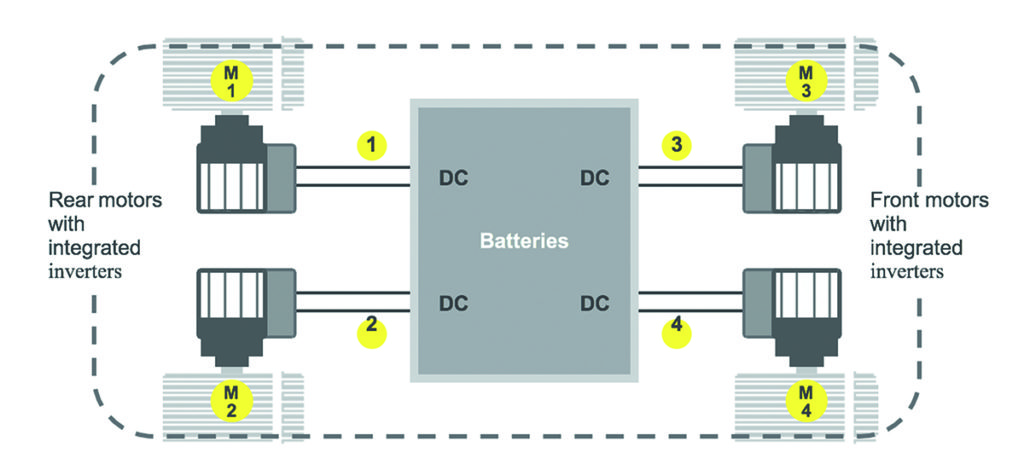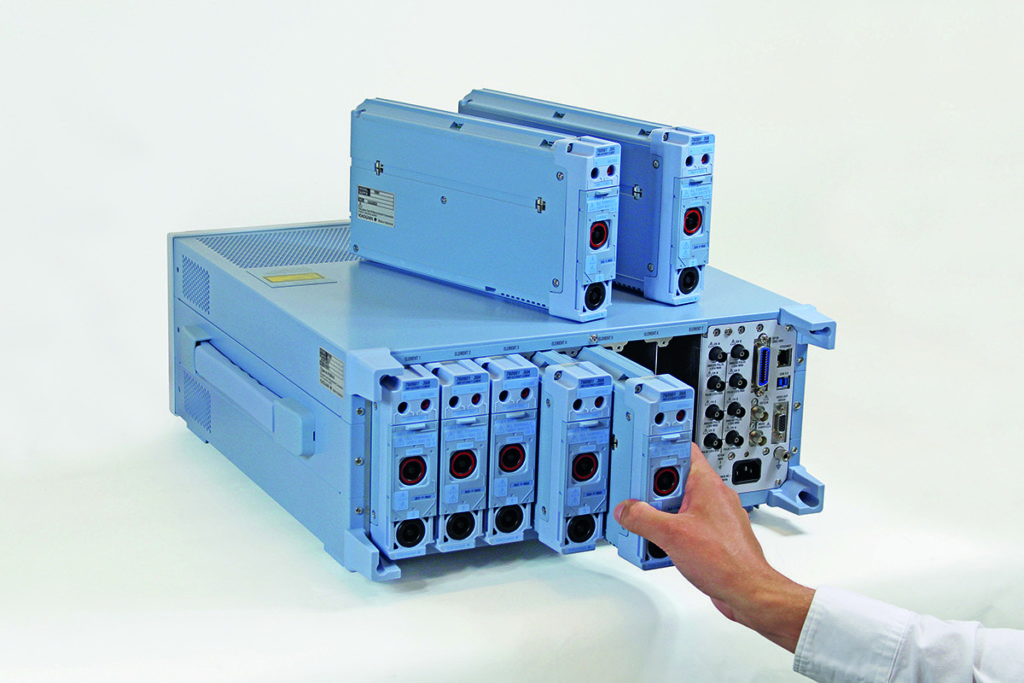By Anoop Gangadharan, Product Marketing Manager, Yokogawa Europe
As markets for power electronics expand and grow, so does the need for their reliable testing, enhanced safety, efficiency and performance. In sectors as diverse as renewable energy and electric vehicles, there’s growing need for custom measurements and consistent accuracy, buoyed by application diversity and standards. Engineers need test and analysis platforms that deliver reliable measurements today but are also prepared for the challenges of tomorrow.
For example, in the automotive sector, electric vehicles require greater charging capacity, shorter charging times and extended travelling range, which requires positive and negative cycle evaluations of these vehicles’ battery charge-and-discharge characteristics. Similarly, the evaluation of inverter signals needs to account for the harmonic superimpositions from switching circuits. Minimising interference from switching noise requires isolated inputs, high-speed sample rates and long-term observations; see Figure 1.

Nowadays there are also moves toward contactless charging, meaning such evaluations will need to be done at lower power factors (the ratio of actual electrical power dissipated by an AC circuit to the product of the r.m.s. values of current and voltage) and frequencies of hundreds of kilohertz – parameters presently outside the scope of traditional test instruments.
Equally, there are very high speed power devices made of semiconductor materials such as silicon carbide and gallium nitride that are increasingly found in power-conversion products (inverters, drives, etc). This results in common-mode voltage effects that can create noise problems that affect the performance of the measurement systems.
Power Distribution
In power transmission and distribution too there are new developments, including renewable energy stations and energy-positive buildings and infrastructure, where there’s no longer unidirectional electricity flow from power station to consumer; see Figure 2. With a multitude of renewable and non-renewable power stations feeding the power network, a balanced grid needs robust testing and accurate measurements, to reduce the impact of noise, distortion and harmonics from multiple sources.

Power stations and large consumers also need to evaluate the effects of their power outputs and usage levels on the grid and on other users. Highly accurate instruments will also be needed for high-frequency measurements. With mean voltages differing greatly from the fundamental voltage waveform, harmonic measurements are needed to establish the values of derived measurements, such as active power.
Similarly, addressing the challenges of measuring parameters such as energy efficiency, harmonic content and power factor will require both progressively greater accuracy and consistency in measurement over the specified ranges and conditions.
Addressing the Challenges
These challenges are now being addressed by a power analyser, the Yokogawa WT5000 (Figure 3), which sets new standards in terms of precision and accuracy. Its flexible modular architecture allows customisation, which can meet the needs of different applications.

This instrument offers a high degree of isolation, noise immunity, current sensing and filtering in a modular architecture that provides an extensible measurement platform. Its ±0.03% power accuracy is combined with a frequency range of 5MHz and 10MS/s (18-bit) sampling rate. Current measurements are available via 5mA to 5A or 0.5A to 30A modules.
Seven built-in slots for user-swappable power input modules (Figure 4) and diverse mainframe options enable users to expand or reconfigure the instrument as their applications and requirements change. In addition to on-power parameters, torque and frequency from four separate motors can also be measured.

Automotive Applications
Between 16% and 18% of the total charge of an electric car is consumed by losses in the electric drive system. Electric and hybrid car manufacturers therefore need to accurately evaluate motor and inverter control to achieve higher precision and greater efficiency. In addition, the accurate analysis of inverter waveforms without interference from switching noise is a key part of evaluating the motor’s drive circuit.
The most important test requirements here are multi-phase measurements from battery, inverter and motor; evaluation of motor characteristics such as torque, rotation speed and direction, slip and electrical angle; battery charge-and-discharge characteristics; and harmonic analysis of inverter signals at various rotation speeds.
With high accuracy, multi-channel power measurements, evaluation of up to four motors and harmonic comparison capabilities, the WT5000 precision power analyser helps automotive engineers improve conversion efficiency, shorten charging times and improve driving range. Its guaranteed accuracy in multichannel measurements enables simultaneous measurements of voltage, current, power, torque, rotation speed, electrical angle and mechanical power, allowing complete evaluation of motor performance and mechatronic efficiency.
With the ability to measure harmonics up to the 500th order, even at low rotation speeds, the instrument also supports harmonic analysis without an external sampling clock.
Automotive Case Study 1
One major automotive manufacturer is carrying out extensive simulations on test rigs to analyse these key parameters. To ensure higher performance and efficiency of the vehicle powertrain, these tests are carried out under rigorous conditions, including industrial inverters and heavy motor loads in simulated extreme conditions (700VDC), far greater than in the real world (< 500V). During these stress tests, analysis is carried out on multiphase voltages, currents and mechatronics parameters with the engine connected to a test rig consisting of an industrial inverter and rotating loads to simulate the car’s inverter and wheels, respectively.
Since the engine powers two electric motors that rotate the front and rear axles, multichannel electromechanical measurements were needed of the inverter and two three-phase motors under extreme voltage, power and torque. As the test rig generates the relevant torques and speeds to simulate the electric drive train, some of the parameters measured include:
- Line and phase voltages across the 3-phase power system;
- Rotational speed, torque and slip;
- Harmonic evaluation of inverters at high switching speeds;
- Engine efficiency.
To achieve the best efficiencies, parameters such as battery voltage, cooling fluid temperature, influence of torque and others are modified and tweaked.
With current varying from a few to several hundred amperes, it is important to have not only a wide dynamic range for measurements, but also high crest factors for capturing any unexpected peaks or distortions.
With such a wide variety of DC and AC signal analyses and electromechanical measurements across various test conditions, specialised measurement solutions are required that can reliably prove adherence to both the manufacturer’s internal standards and external ones, such as WLTP, NEDC and NEFZ.
The multiphase voltages, currents and mechatronics parameters through the battery, inverter and motor systems are analysed at different stages of the development cycle using different measurement solutions including Yokogawa precision power analysers for guaranteed accuracy in motor evaluation, plus the company’s DL850E vehicle edition Scopecorder to provide thorough analyses of mechatronics and CAN, DC bus and ECU communications signals.
Automotive Case Study 2
To ensure the safety, performance and efficiency of new electric vehicles, another manufacturer needed to extract maximum efficiency from the charging system, power train and components of their vehicle system.
Noise, harmonics, resonance and other parameters were also evaluated within inverters and motors while pushing the vehicles to the limits of their performance to assess the effects of excessive temperatures, voltages or loads.
In addition to tests in actual prototype vehicles, this manufacturer is performing extensive simulations on test rigs to analyse key parameters and to assess their effects under laboratory conditions.
Hence engineers have developed a “hazardous voltage” rig, capable of tests over the ranges 60-1500VDC and 30-1000VAC, although in practice test voltages in this application are normally limited to 200-500V.
The test rig is used to analyse multiphase voltages, currents and mechatronics parameters in the battery, inverter and motor system. Testing the powertrain requires multichannel electromechanical measurements from inputs such as the battery, booster converter and the three-phase motor, along with mechanical measurements from torque and speed sensors. This allows the simultaneous measurement of torque, rotation speed and direction, along with electrical parameters like voltage, current and power, for entire evaluation of charging, discharging and powertrain efficiency.
In this case, the powertrain includes two synchronous permanent magnet electric motors powering the front and rear axles. In the test rig, AC dynamometers, or “dynos”, are used to absorb and generate the relevant torques and speeds, thereby simulating the entire electric drive train of the vehicle. Tests are conducted to provide reliable measurements of:
- Line and phase voltages across the 3-phase power system;
- CAN, DC bus and ECU automotive Ethernet communications;
- Trigger and excitation voltages;
- Rotational speed, torque and slip;
- Harmonic evaluation of inverters at high switching speeds.
Again, by analysing individual components, systems and subsystems individually and combined, engineers can achieve significant improvements in the powertrain and charging systems for greater performance, torque, charging time and driving range.









